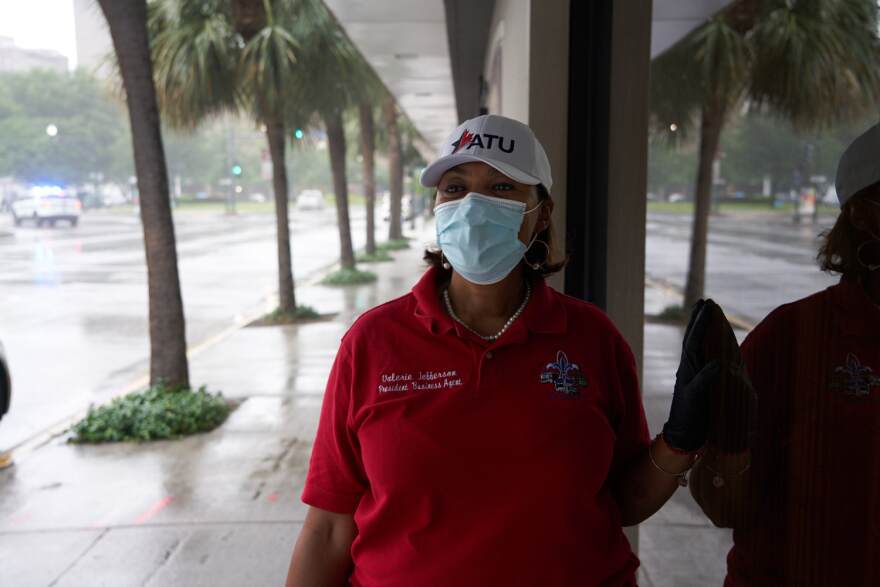With New Orleans’ COVID-19 percent positivity rate last week at 4 percent, down from 5.9 reported the previous week, the city will lift most of the Modified Phase 1 restrictions currently in place and move back into a Modified Phase 2 beginning at 6 a.m. Friday.
Modified Phase 2 allows restaurants and other service-oriented businesses, like salons and barbershops, 50 percent occupancy indoors. Gatherings can now accommodate 10 people indoors and 25 people outdoors and people from different households can be together as long as they’re wearing masks and staying 6 feet apart whenever possible.
Indoor bar service will remain off-limits for three weeks, until Mardi Gras is over. According to the state’s Modified Phase 2 guidelines, bars should be able to reopen if Orleans Parish’s percent positivity rate remains lower than 5 percent for another week. But the city has decided to keep indoor bar spaces closed for three more weeks regardless of what next week’s data shows.
“Unfortunately, indoor service at bars has proven to be very risky,” Health Director Dr. Jennifer Avegno said at a press conference Wednesday. “…You’ve seen some pretty high-profile examples of what happens when indoor events that were not permitted occur in those kinds of spaces.”
Outdoor bar service is capped at 50 people and to-go sales are still allowed.
City Communications Director Beau Tidwell said the city knows visitors are going to travel to New Orleans for Mardi Gras, “but there’s nothing to come for and bars not being open is a part of that.”
This is a little different from a statement Mayor LaToya Cantrell made Jan. 19 — that visitors are welcome in New Orleans during Mardi Gras, but are required to “act like New Orleanians” and follow the city’s guidelines.
There is concern that large crowds — like the ones that were captured on social media on New Year’s Eve — will be gathered in the French Quarter during Mardi Gras.
Tidwell said plans for mitigating large crowds on Bourbon Street on Fat Tuesday are being finalized.
The city has seen a steep decline in its COVID-19 test percent positivity rate since the beginning of January, when the Modified Phase 1 order began. Modified Phase 1 banned all gatherings with people from different households, restricted bars to outdoor service only at 25 percent capacity, capped restaurant table sizes at six people from the same home, and reduced audience sizes at sporting events to 4 percent.
“We’ve seen a clear relationship between the spread of COVID-19 and the individual actions and really the community-wide actions we’re all taking on a daily basis,” Avegno said. “By seriously restricting interactions between people in New Orleans over the last three weeks, we’ve seen an improvement in all of the metrics that we watch every day.”
Cities across the country are seeing steep declines in percent positivity rates. Public health experts attribute this in part to the high number of Americans that have contracted COVID-19 — roughly one third of the population, according to epidemiological models. A recent study published in Science journal found that immunity to COVID-19 can last up to eight months. It is not clear whether everyone infected with the virus will develop immunity. But if there are several people who have already been infected with the virus, that means it has less new people to infect when it is present in a crowd.
Roughly 8 percent of Louisianans have contracted COVID-19, according to the latest data from the department. Another 6.6 percent have received at least the first of the two injections of COVID-19 vaccine required to ensure immunity from severe illness related to the virus.
Avegno said that although there are fewer people being admitted to hospitals with severe COVID-19 symptoms, “hospitals are still stretched.”
She said the high number of COVID-19-related deaths in New Orleans in January is likely due to the surge in cases two to three weeks ago.
Avegno stressed that New Orleans is “not out of the woods,” and said that the city is in a “race against time” to get its seniors and frontline healthcare workers vaccinated before a variant of the virus, first identified in the United Kingdom, becomes the dominant COVID-19 strain in the U.S.Public health experts expect that to happen in March. The strain was first detected in Louisiana in the greater New Orleans area in mid-January.
A mutation of COVID-19 found in Brazil was detected in a patient in Minnesota on Tuesday. A South Africa variant has shown up in 10 different countries including neighboring Cuba, but has yet to be found in the United States.
On Monday and Tuesday, President Joe Biden signed executive orders banning most non-citizens who had traveled to South Africa, Brazil and the UK from entering the U.S.. U.S. citizens who have traveled to these countries are able to re-enter and could carry the new strains with them.




